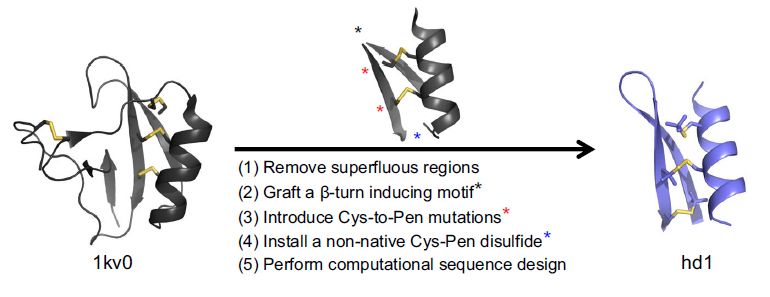Peptide heterodimers are prevalent in nature, which are not only
functional macromolecules but molecular tools for chemical and synthetic
biology. Computational methods have also been developed to design
heterodimers of advanced functions. However, these peptide heterodimers
are usually formed through noncovalent interactions, which are prone to
dissociate and subject to concentration-dependent nonspecific
aggregation. Heterodimers crosslinked with interchain disulfide bonds
are more stable, but it represents a formidable challenge for both the
computational design of heterodimers and the manipulation of disulfide
pairing for heterodimer synthesis and applications. Here, we report the
design, synthesis and application of interchain disulfide-bridged
peptide heterodimers with mutual orthogonality by combining
computational de novo designs with a directed disulfide pairing
strategy. These heterodimers can be used as not only scaffolds for
generating functional molecules but chemical tools or building blocks
for protein labeling and construction of crosslinking hybrids. This
study thus opens the door for using this unexplored dimeric structure
space for many biological applications.

